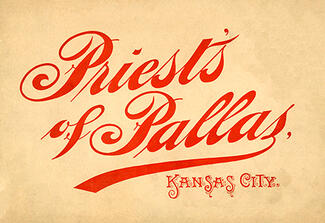Priests of Pallas
Who were the Priests of Pallas? KCQ investigates KC's on-again, off-again fall festival
Kansas City culture wouldn’t be the same without fall fairs and festivals. But what’s celebrated and by whom has changed a great deal throughout the city’s history. An alarmed reader recently wrote to What’s Your KCQ?, a collaboration between the Kansas City Public Library and The Kansas City Star after running across a souvenir from an 1895 parade in the city on eBay. The antique was a remnant of the Priests of Pallas (POP) parade and included the letters KKK. The KCQ team quickly assured our reader that the letters did not represent that KKK, but something else entirely.
Kansas City in the 1880s was struggling to shed its frontier image, and the city was filled with a sense of boosterism. Professional and social clubs formed, their members all hoping to make a name for the young city and attract new investments. One such organization, the Flambeau Club, began holding parades to attract attention to downtown businesses. Later, inspired by Mardi Gras celebrations in New Orleans and the Veiled Prophet parade and ball in St. Louis, the Flambeaus decided Kansas City needed its own carnival season. In September 1886, a parade association formed to plan a multi-day festival the following year.


